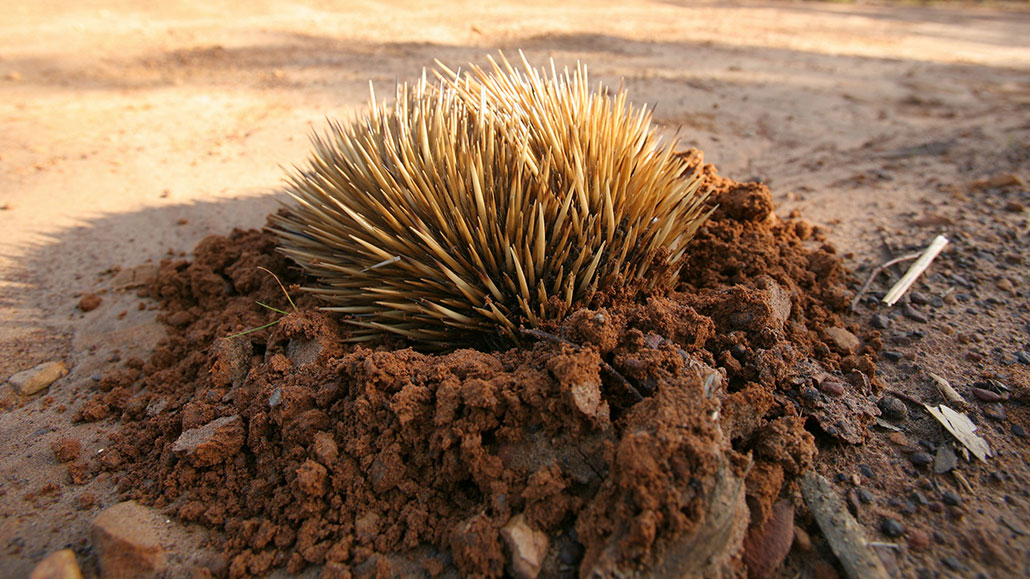Physical Address
304 North Cardinal St.
Dorchester Center, MA 02124
Physical Address
304 North Cardinal St.
Dorchester Center, MA 02124

Surprise! These animals can help fight climate change. Echidnas and other digging mammals in Australia play a crucial role in combating climate change by creating pits and mounds in eucalypt forests. This uneven terrain is not just a random occurrence but a sign of climate warriors at work.
These animals, including the spiny anteater known as the echidna, dig holes and fling soil into piles as they search for food. While this may not seem like the makings of a climate hero, it turns out that these actions have a significant impact on carbon dioxide (CO2) levels in the air.
According to David Eldridge, an ecosystem scientist at the University of New South Wales, the pits left behind by these digging mammals collect fallen leaves, seeds, dead insects, and other organic matter. These pits bring the organic matter in contact with soil microbes, which break it down and incorporate carbon into the soil. This process helps build up soil carbon and prevents the release of CO2 into the atmosphere.
Without the presence of these pits, sunlight would break down the organic matter, leading to the release of CO2, a greenhouse gas, into the air. The digging actions of echidnas and other animals, therefore, play a vital role in keeping carbon out of the atmosphere and mitigating climate change.
It’s important to note that while these animals contribute to carbon storage, they do not remove carbon dioxide from the atmosphere on their own. However, by supporting healthy ecosystems, they indirectly boost the growth of organisms like algae, plants, and bacteria that can remove CO2 through photosynthesis.
These nature-based solutions to climate change are gaining recognition as humans grapple with the urgent need to reduce greenhouse gas emissions. Protecting animal climate heroes like echidnas and other digging mammals is crucial for maintaining healthy ecosystems and promoting carbon storage in soil and organic matter.
So, the next time you walk through a eucalypt forest in Australia and encounter uneven terrain, remember that these pits and mounds are not just a quirk of nature but a sign of the important work being done by these animals to fight climate change.
The effect of the digging actions of animals like echidnas and other digging mammals in fighting climate change is significant. These animals, through their role in creating pits and mounds, contribute to carbon storage and promote the health of ecosystems.
By digging holes and flinging soil into piles, these animals create a unique terrain that plays a crucial role in keeping carbon dioxide (CO2) out of the air. The pits left behind by these animals collect organic matter such as fallen leaves, seeds, and dead insects. This organic matter, when in contact with soil microbes, undergoes decomposition and carbon incorporation into the soil.
The incorporation of carbon into the soil helps build up soil carbon, preventing the release of CO2 into the atmosphere. This process contributes to carbon storage and helps counter the rising levels of CO2, a greenhouse gas responsible for climate change.
Furthermore, the presence of these pits enhances the growth of plants and algae by providing a favorable environment for seed germination and nutrient availability. The broken ground allows water to penetrate the hard-packed soil, facilitating seed sprouting and plant growth.
Additionally, the digging actions of these animals create spaces for seeds to be protected from predation by ants and other animals. This protection allows seeds to escape being eaten and increases the chances of successful plant reproduction and growth.
It’s not just echidnas and other digging mammals in Australia that contribute to carbon storage and ecosystem health. Digging animals worldwide, such as anteaters, aardvarks, jackrabbits, and ibex, play similar roles in different ecosystems.
Overall, the effect of these digging animals on climate change mitigation is twofold. Firstly, they directly contribute to carbon storage by incorporating organic matter into the soil, preventing the release of CO2 into the atmosphere. Secondly, they indirectly support the growth of carbon-storing organisms like plants and algae by creating favorable conditions for their development.
Recognizing the importance of these animal climate heroes and protecting their habitats is crucial for maintaining healthy ecosystems, promoting carbon storage, and mitigating the impacts of climate change.
If you’re wondering where the article came from!
#